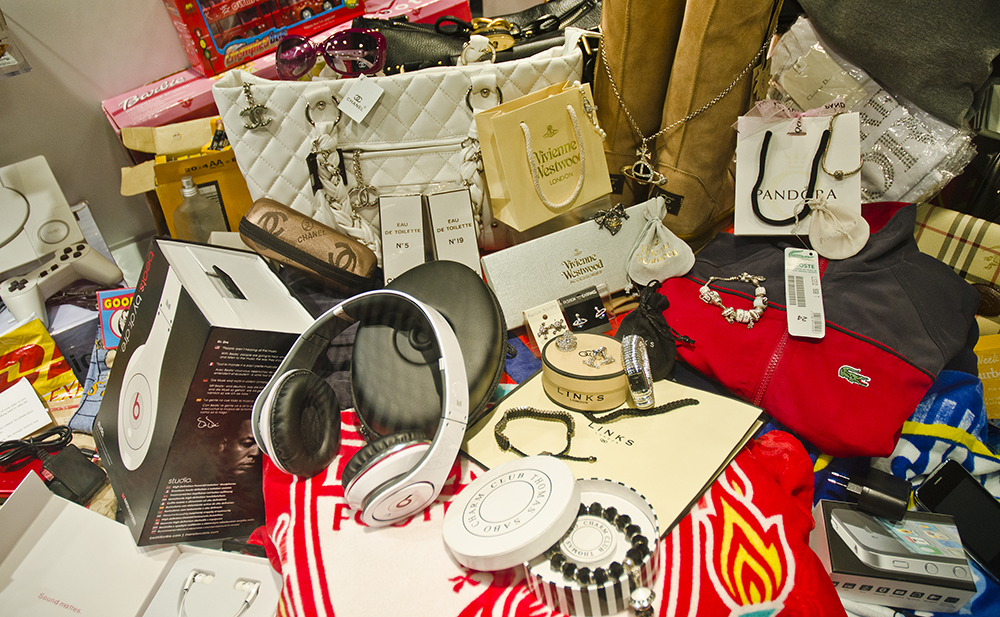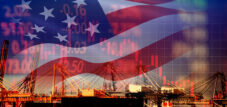+++ The industries most affected by counterfeit products +++ US companies most affected by counterfeits +++
+++ The Industries Most Affected by Counterfeit Products +++ US Companies Most Affected by Counterfeiting +++
The Industries Most Affected by Counterfeit Products
Considering that some of the biggest shoe brands generate tens of billions in sales each year, it's no surprise that counterfeiters are turning to the footwear industry, trying to cash in on the global sneaker and luxury shoe craze. According to the latest figures released by the OECD , shoes accounted for 22 percent of the total value of counterfeit goods seized by customs in 2016, making them the most counterfeited product category ahead of clothing, leather goods and electrical goods.
The most counterfeit brands include luxury brands such as Michael Kors, Gucci and Louis Vuitton, as well as mass brands such as Nike, Levi's and Adidas. All of these brands are aggressively fighting counterfeiters, with damages running up to billions of dollars each year. According to OECD estimates based on customs seizures, the total value of counterfeit and pirated goods traded internationally in 2016 was more than $500 billion, or 3.3 percent of global trade.
Considering that some of the largest footwear brands generate tens of billions in sales every year, it doesn't come as a surprise that counterfeiters would target the footwear industry and try to profit from the global sneaker and luxury shoe craze. According to the latest figures published by the OECD , footwear accounted for 22 percent of the total value of counterfeit goods seized by customs in 2016, making it the most pirated product category, ahead of clothing, leather goods, and electrical equipment.
Among the most counterfeited brands are luxury brands such as Michael Kors, Gucci or Louis Vuitton as well as mass-market brands such as Nike, Levi's and Adidas. All of these brands are aggressively fighting counterfeiters with damages piling up to billions of dollars every year. According to OECD estimates based on customs seizures, the total value of counterfeit and pirated articles traded internationally in 2016 amounted to more than $500 billion, or 3.3 percent of world trade.
US Companies Most Affected by Counterfeiting
If you've ever walked through a major street market during the holidays, chances are you've seen your share of counterfeit handbags, soccer jerseys, and Louis Vuitton scarves. And while most of us know that counterfeit products are a major problem for footwear, fashion and luxury brands, the scale of the problem is still surprising. OECD report released earlier this week, the total value of cross-border trade in counterfeit and counterfeit products was $509 billion in 2016, or 3.3 percent of global trade. That's up from $461 billion (2.5 percent of global trade) in 2013, although global trade volumes of legitimate goods have stagnated in recent years.
China and Hong Kong are by far the largest source countries for counterfeit goods, with a combined share of more than 75 percent, followed by Turkey, Singapore and Germany, all of which accounted for a low single-digit share of global customs seizures in 2016. If you look at the countries most affected by counterfeiting, a somewhat more diverse picture emerges. Between 2014 and 2016, 24 percent of the total value of counterfeit products seized by customs worldwide violated the intellectual property rights of US-based companies, with French, Italian and Swiss companies also heavily affected. Interestingly, the vast majority of counterfeit or pirated products seized by customs authorities are shipped as small packages. 69 percent of customs seizures between 2014 and 2016 were made by postal or express courier services, and 85 percent of intercepted shipments contained fewer than 10 items.
If you've ever walked across a larger street market while on holidays, chances are you've seen your fair share of counterfeit handbags, football jerseys, and Louis Vuitton scarves. And while most of us are aware of the fact that fake products are a major problem for footwear, fashion and luxury brands, the scope of the problem is surprising nonetheless. According to an OECD report published earlier this week, the total value of counterfeit and pirated products traded across borders in 2016 amounted to $509 billion or 3.3 percent of world trade. That's up from $461 billion (2.5 percent of world trade) in 2013 despite the fact that worldwide trade volumes of legitimate goods stagnated over the past few years.
With a combined share of more than 75 percent, China and Hong Kong are by far the biggest provenance countries for fake goods, distantly followed by Turkey, Singapore, and Germany who all accounted for a low single-digit share of global customs seizures in 2016 .Looking at the countries most affected by counterfeits paints a slightly more diverse picture. Between 2014 and 2016, 24 percent of the total value of counterfeit products seized by customs around the world were infringing on intellectual property rights of companies based in the United States, with French, Italian and Swiss companies also heavily affected. Interestingly, the vast majority of fake or pirated products seized by customs authorities are shipped as small parcels. 69 percent of customs seizures between 2014 and 2016 were carried by postal or express courier services and 85 percent of intercepted shipments contained fewer than 10 items.


